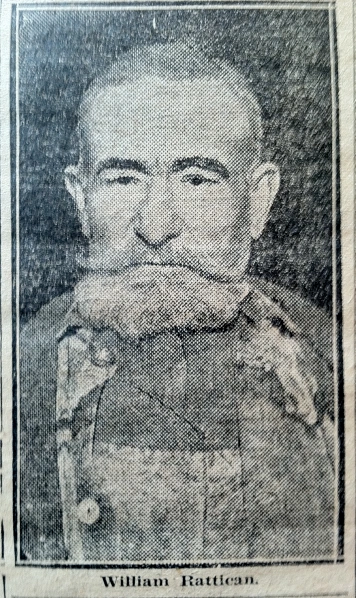“

Why Mr. Rattican, I couldn’t think of it.” The words struck him like a slap in the face. He was stunned and confused. It was not supposed to happen this way. He was in love with her. It was not just her stunning beauty but her educated mind he was in love with. She was a schoolteacher and he enjoyed reading Shakespeare. Perhaps this teacher he planned to marry one day introduced him to Shakespeare or it was the common appreciation of the late 16th century poet and playwright that was shared between them that brought them together.
The union between the two was not to be. “Why Mr. Rattican, I couldn’t think of it” was her answer to his proposal of marriage. He was devastated. Could he ever love again? He wouldn’t.
Several decades later living in a foreign land he would be a beloved member of a small seaside village but he would be alone. William had been a hard worker all of his life. He was born in county Galway, Ireland and learned to be a cotton spinner. He moved on from that profession and sold dry goods for a time before moving to England to work on building a railroad through the mountains to Scotland. By this time he was somewhere between 21 and 25 years old. His closest family was a sister living in America. When her letters stopped arriving, William became alarmed. He left his home and job in England and set off for America to find her.
She had been living in Lawrence, Massachusetts perhaps working in the local mills. When he arrived he could not locate her. Perhaps acting on a tip William headed south to New Bedford where he found her safe.
The record is not clear as to whom William’s sister was. Census and directories of the time do not list any Ratticans or the various spellings of the name living in New Bedford at the time (William’s surname is found as Radigan, Ratican and O’Ratican in various records). A death record from 1901 lists a Mary Rafferty, wife of Peter Rafferty. Her maiden name is listed as Radigan on the record and notes her birth place as Ireland in 1848. One can speculate that if this was William’s sister she may have been preoccupied with her sick husband who would die in 1884 of “epilepsy with paralysis” as the reason she stopped sending letters to William prompting his search for her.
William decided to stick around the city and found employment. Within a few years, perhaps after making sure his sister was cared for, William found himself drifting down to the Cape working odd jobs here and there. He may have realized that putting a distance between himself and the woman he was in love with, but could never be with, helped him cope with the loss. He had always planned to return to England. However, sometime between 1885 and 1890, he stumbled in to Mattapoisett. By this time, he became withdrawn from people. He couldn’t stay in one place for long, had few possessions and was making do without full time employment.
He quietly settled in Mattapoisett and soon became part of the community. He became a recognized face and was known for his quiet, yet polite, demeanor. The locals felt a certain amount of pity for the man they referred to as “Willie of the Marble Hall”. He did odd jobs for people around town. He didn’t have a home and he was tolerated sleeping out and about the village and even moving indoors to people’s sheds and barns during inclement weather and winter months. He was encouraged to live in the local almshouse on Aucoot Cove but he refused. By the time he was in his 50s, the people of Mattapoisett became more concerned for the aging man’s welfare. In a last ditch effort to encourage him to move into the almshouse, the town notified him he was no longer allowed to sleep in sheds or barns. To avoid confrontation and to keep from moving into the almshouse, Willie built a rudimentary hut in less than a day. His makeshift house sat near the town hall and the New Bedford and Onset Street Railway, probably in the area of present day Depot Street and Railroad Avenue.
Willie lived out his days in his shack with a roommate, a cat named Daisy. Later in life, he began to open up and talk about his life. Word spread and newspapers from Louisiana and Nebraska wrote about “Mattapoisett Willie”. He may have enjoyed the attention and had fun with it. In 1900, he told the census taker he was from Ireland and his last name was O’Ratican. He told a news reporter he was from Scotland. To another, he claimed to be from England. In one news story he talked about his lost love. To another reporter, he hinted at a failed romance but refused to talk about it.
By 1908, Willie was living in another shanty at the end of North Street. On December 26 of that year, Willie had been walking along North Street when he was stuck by an automobile driven by Isaiah Purrington Atsatt, who lived on Main Street in the village. William suffered a broken collarbone and a severe head wound from the impact. He was taken to St. Luke’s Hospital in New Bedford and died two days later without regaining consciences. His body was laid to rest in Cushing Cemetery in Mattapoisett, perhaps in an unmarked grave. Not long before his death, Willie remarked, “I am not a lonesome man. I have been happy all of my life and am fairly well contented now”. Among the few possessions he had when he died was his personal library, which included: the Bible, Arabian Nights and two volumes of works of Shakespeare.
Written and researched by Kyle DeCicco-Carey

コメント